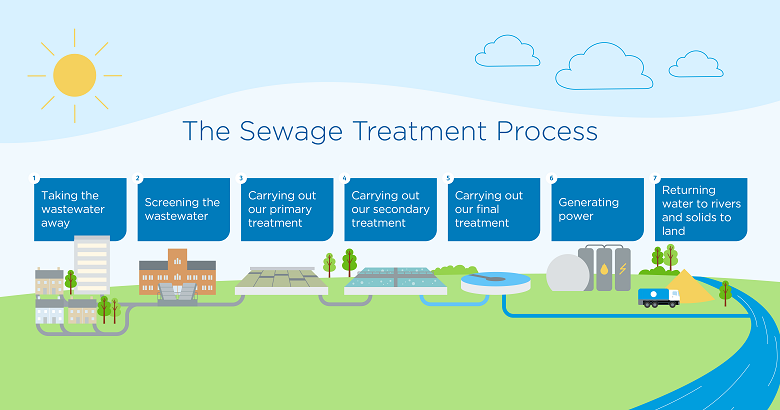Trick Obstacles in Urban Waste Water Treatment Methods
Trick Obstacles in Urban Waste Water Treatment Methods
Blog Article
Strategic Approaches to Boost Waste Water Treatment Efficiency and Decrease Ecological Impact
In the realm of waste water treatment, the quest for boosted effectiveness and decreased ecological effect is a perpetual obstacle that requires tactical options. The integration of advanced treatment technologies, energy-efficient processes, source recuperation strategies, improved nutrient removal strategies, and smart tracking and control systems represents a multifaceted structure for dealing with these pushing issues.
Advanced Treatment Technologies
Innovative membrane layer purification systems have actually revolutionized sophisticated wastewater treatment procedures, significantly enhancing the removal of contaminants. This technology has shown to be very reliable in getting rid of a vast array of impurities, including drugs, heavy metals, and natural substances, which are often challenging to eliminate through traditional therapy techniques.
Additionally, membrane purification systems offer countless advantages over standard treatment methods. Additionally, these systems are very flexible and can be easily incorporated right into existing therapy plants or used as standalone devices for decentralized applications.
Energy-Efficient Processes
The integration of energy-efficient procedures in wastewater therapy systems is important for optimizing source utilization and lowering operational prices. By executing energy-efficient modern technologies, treatment plants can significantly reduce their carbon impact and general ecological impact. One crucial method to boosting energy effectiveness in wastewater treatment is the application of innovative oygenation systems, such as fine bubble diffusers or surface aerators, which can improve oxygen transfer performance and decrease energy usage. Additionally, integrating power recuperation systems, like anaerobic digestion for biogas production or making use of excess heat for thermal processes, can assist counter power requirements and promote sustainability.
Moreover, enhancing process control and automation through the use of advanced sensors and keeping an eye on systems can improve general power effectiveness by changing operations in real-time based on actual demand and problems. Implementing power audits and frequently keeping an eye on power performance signs are necessary methods to determine areas for improvement and track energy-saving initiatives effectively. Overall, the fostering of energy-efficient procedures in wastewater treatment not only benefits the environment but likewise contributes to long-term price savings and functional sustainability.
Source Healing Strategies
With a concentrate on maximizing resource utilization and sustainability in wastewater therapy systems, the execution of resource recovery approaches emerges as a critical aspect in boosting functional efficiency. Source healing techniques in wastewater therapy include the identification and removal of useful resources from the waste stream, therefore turning what was once taken into consideration waste into a valuable property. By executing source healing techniques such as nutrient elimination and recovery, power generation from natural issue, and the production of reusable water, wastewater therapy plants can lessen environmental influence while optimizing efficiency.

Enhanced Nutrient Elimination Strategies
Executing innovative nutrient elimination methods is vital for optimizing the efficiency of wastewater therapy systems. Improved nutrient removal plays an essential role in minimizing the ecological effect of treated effluent released into water bodies. Among the crucial methods used for boosted nutrient removal is the process of organic nutrient removal (BNR), which involves the elimination of nitrogen and phosphorus with organic processes. This can be achieved via using specialized microorganisms that can transform nitrogen compounds right into inert nitrogen gas with denitrification, and accumulate phosphorus within their cells via a process called improved biological phosphorus removal (EBPR)

In addition to BNR, progressed therapy methods such as membrane bioreactors try here (MBRs) and created marshes can also be utilized to boost nutrient removal effectiveness. MBRs make use of membrane layers to achieve high-grade effluent standards by efficiently getting rid of nutrients and put on hold solids. Constructed wetlands simulate all-natural wetland processes to eliminate nutrients via plant uptake, microbial task, and sedimentation. By incorporating these sophisticated nutrient elimination strategies into wastewater treatment municipalities, industries and systems can effectively decrease nutrient pollution and safeguard the environment.
Smart Monitoring and Control Equipment
Utilizing advanced technology, the combination of smart monitoring and control systems changes the functional efficiency of wastewater therapy centers. These systems incorporate innovative sensing units and data analytics to continually keep an eye on essential parameters such as pH degrees, turbidity, dissolved oxygen, and circulation prices in real-time. By collecting and analyzing this information, operators can gain useful insights right into the efficiency of the treatment procedures, enabling aggressive changes to enhance therapy performance.
Smart surveillance and control systems likewise sustain remote surveillance capabilities, permitting operators to accessibility real-time data and control functions from off-site places. This remote access improves functional versatility and check these guys out responsiveness, allowing swift treatments in case of system breakdowns or fluctuations in influent high quality. Moreover, the predictive upkeep abilities of these systems aid prevent devices failings and reduce downtime, inevitably enhancing the total reliability of wastewater treatment procedures (Waste Water Treatment).
Conclusion
To conclude, strategic techniques such as advanced treatment modern technologies, energy-efficient processes, resource recovery methods, boosted nutrient removal methods, and smart tracking and control systems play an important role in boosting wastewater therapy performance and decreasing ecological influence. By implementing these techniques, wastewater therapy plants can boost their total efficiency, lower power intake, recoup beneficial sources, and make certain conformity with environmental policies. These methods are important for efficient and sustainable wastewater monitoring techniques.

In final thought, strategic techniques such as advanced treatment modern technologies, energy-efficient processes, source recovery methods, enhanced nutrient removal strategies, and smart tracking and control systems play a vital role in boosting wastewater therapy effectiveness and minimizing ecological impact.
Report this page